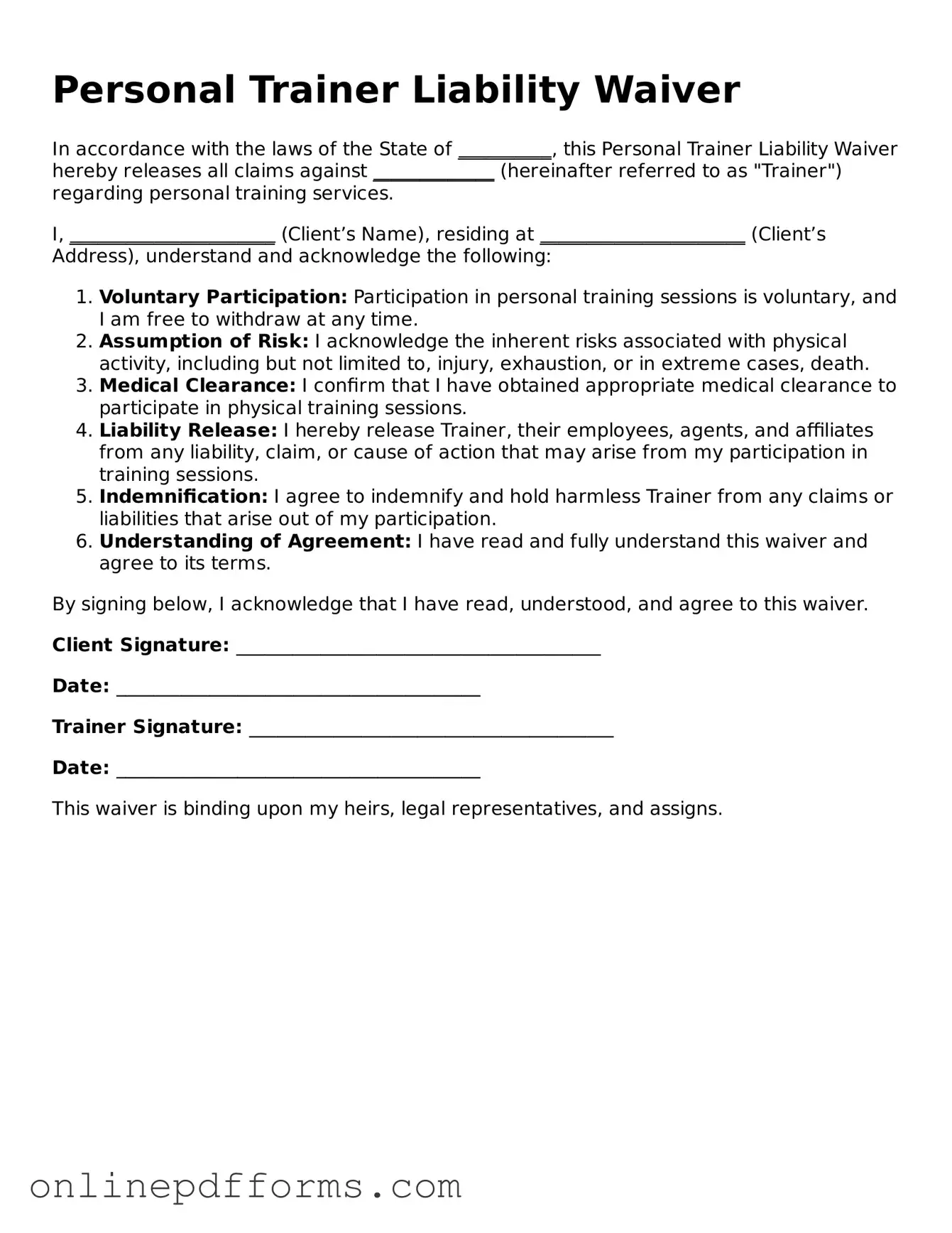The Personal Trainer Liability Waiver form is similar to the Gym Membership Agreement. Both documents are designed to protect the facility and trainers from liability. By signing the Gym Membership Agreement, members acknowledge the risks associated with using gym equipment and participating in activities. This understanding helps ensure that members take personal responsibility for their safety while using the gym's services.
Another document that shares similarities is the Release of Liability form. This form is often used in various activities and events, including sports and recreational activities. Like the Personal Trainer Liability Waiver, it requires participants to acknowledge the risks involved and agree not to hold the organizers responsible for any injuries. Both documents aim to ensure that individuals understand their responsibilities and the potential dangers involved.
The Informed Consent form is also akin to the Personal Trainer Liability Waiver. This document is typically used in medical and therapeutic settings, where clients must be informed of potential risks before receiving treatment. By signing, clients indicate that they understand the risks and agree to proceed. This concept of informed consent is crucial in both personal training and healthcare, emphasizing the importance of client awareness.
The Sports Participation Agreement is another document that mirrors the Personal Trainer Liability Waiver. Athletes often sign this agreement before participating in sports teams or leagues. It outlines the inherent risks of the sport and requires athletes to accept these risks. Both documents serve to protect organizations and trainers by ensuring participants are aware of their responsibilities and the potential for injury.
Engaging in various activities often necessitates the use of a comprehensive Release of Liability form to safeguard against potential claims. This document clarifies the responsibilities of all parties involved, ensuring a mutual understanding of the risks associated with participation.
The Adventure Activity Waiver is similar as well. This form is commonly used for activities like rock climbing, zip-lining, or white-water rafting. Participants must acknowledge the risks associated with these high-adventure activities. By signing the waiver, they agree not to hold the operators liable for any injuries. This parallels the Personal Trainer Liability Waiver in its goal of making participants aware of risks involved in physical activities.
The Event Participation Waiver is another comparable document. This waiver is often required for participants in events like marathons or obstacle courses. It informs participants about the risks of participating in such events and protects organizers from liability. Like the Personal Trainer Liability Waiver, it emphasizes the importance of participant awareness and acceptance of risks.
The Fitness Class Waiver shares similarities with the Personal Trainer Liability Waiver as well. This document is used in group fitness classes to ensure participants understand the risks of exercise and agree to assume responsibility for their safety. By signing, participants acknowledge that they are aware of their physical condition and limitations, similar to what is required in a personal training context.
The Dance Class Liability Waiver is another related document. This waiver is used in dance studios to inform students of the risks associated with dance activities. Students must agree to assume these risks and not hold the studio responsible for injuries. This mirrors the purpose of the Personal Trainer Liability Waiver, which aims to ensure participants are informed and accountable for their actions.
Lastly, the Personal Training Agreement is closely related to the Personal Trainer Liability Waiver. This agreement outlines the terms of the training relationship, including fees and responsibilities. While it primarily focuses on the business aspects, it often includes a liability waiver component. This ensures that both parties understand the risks involved in personal training and agree to the terms of their engagement.
